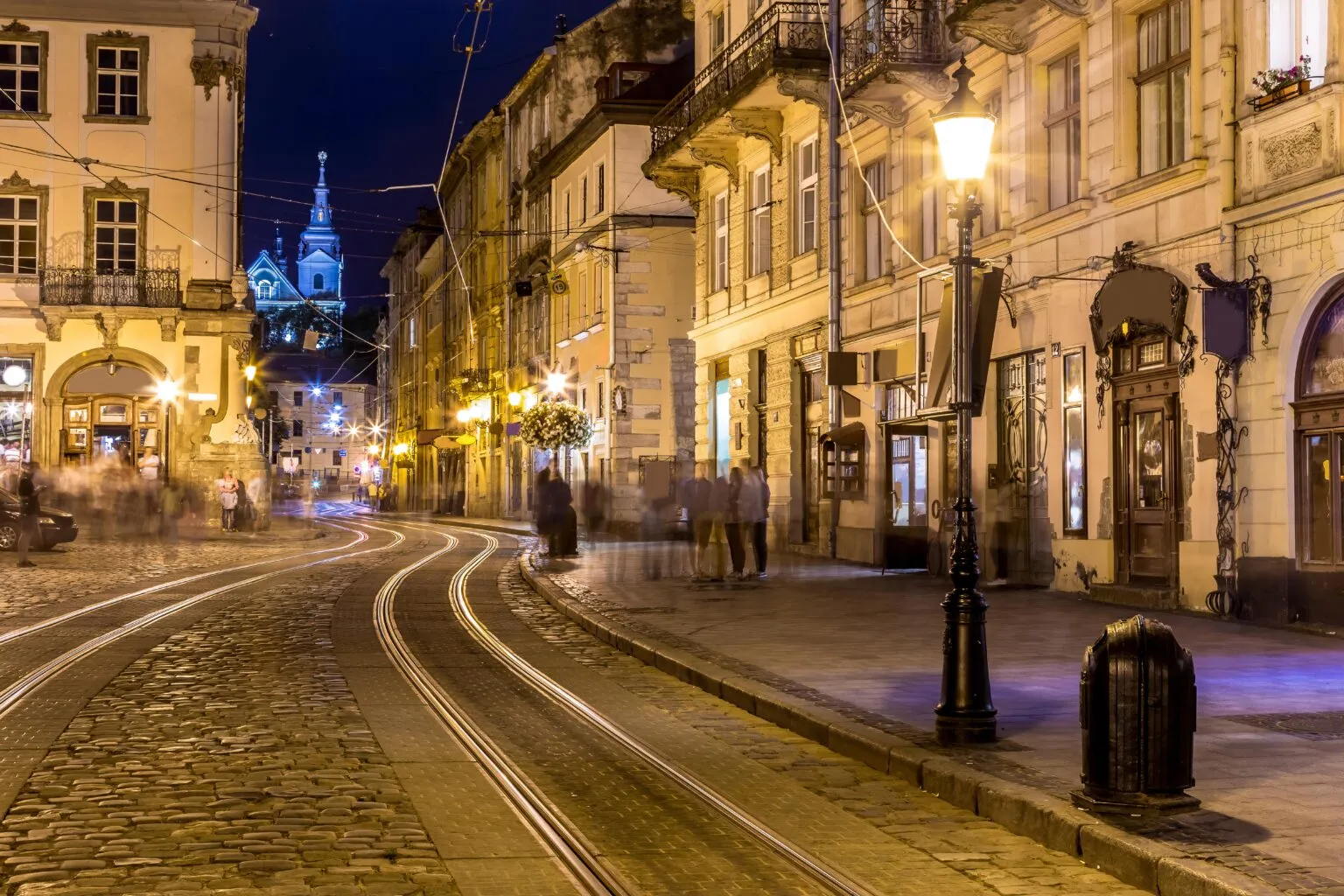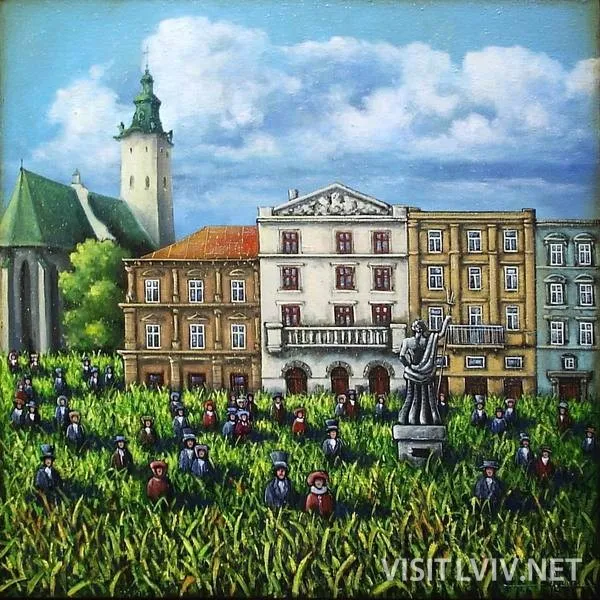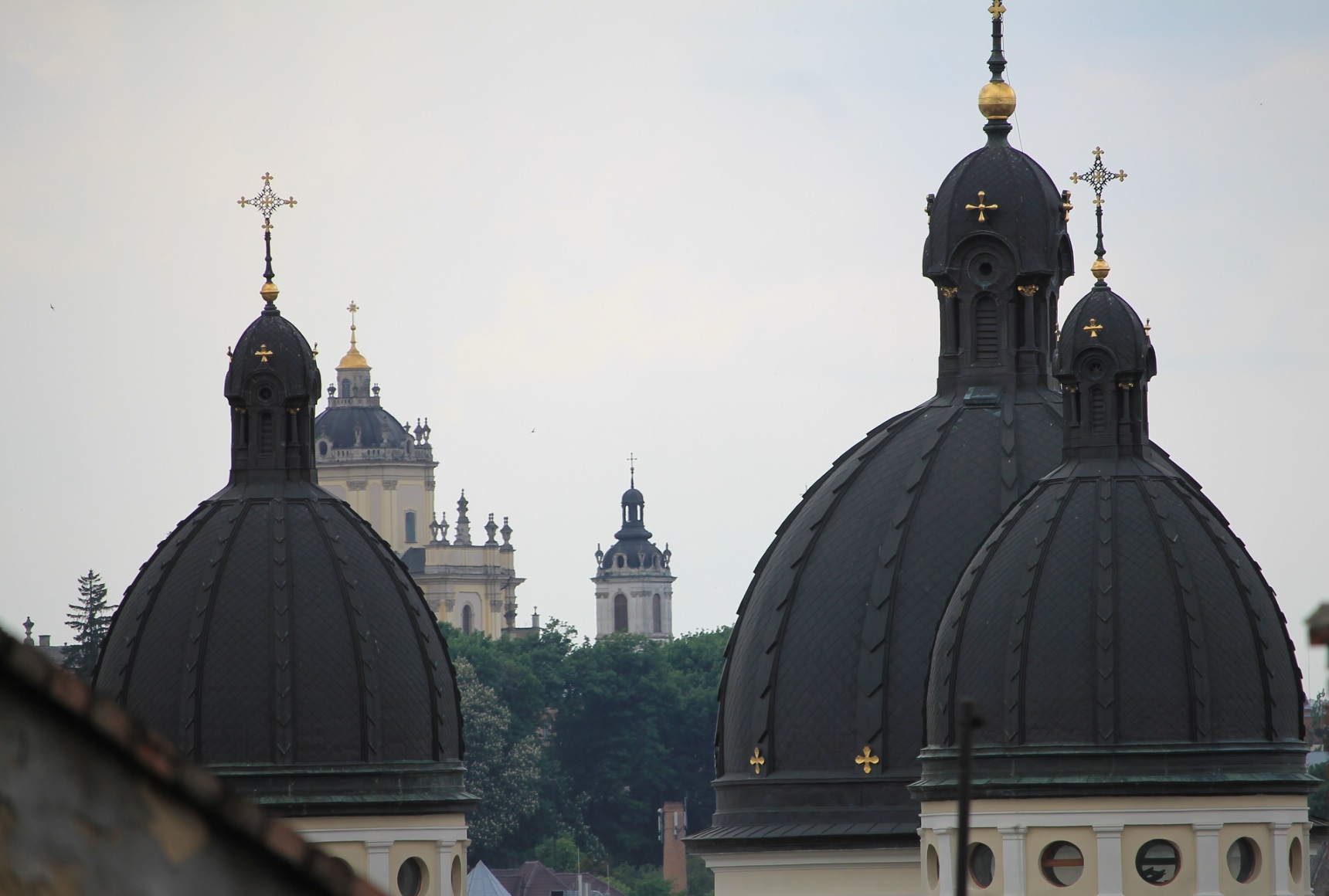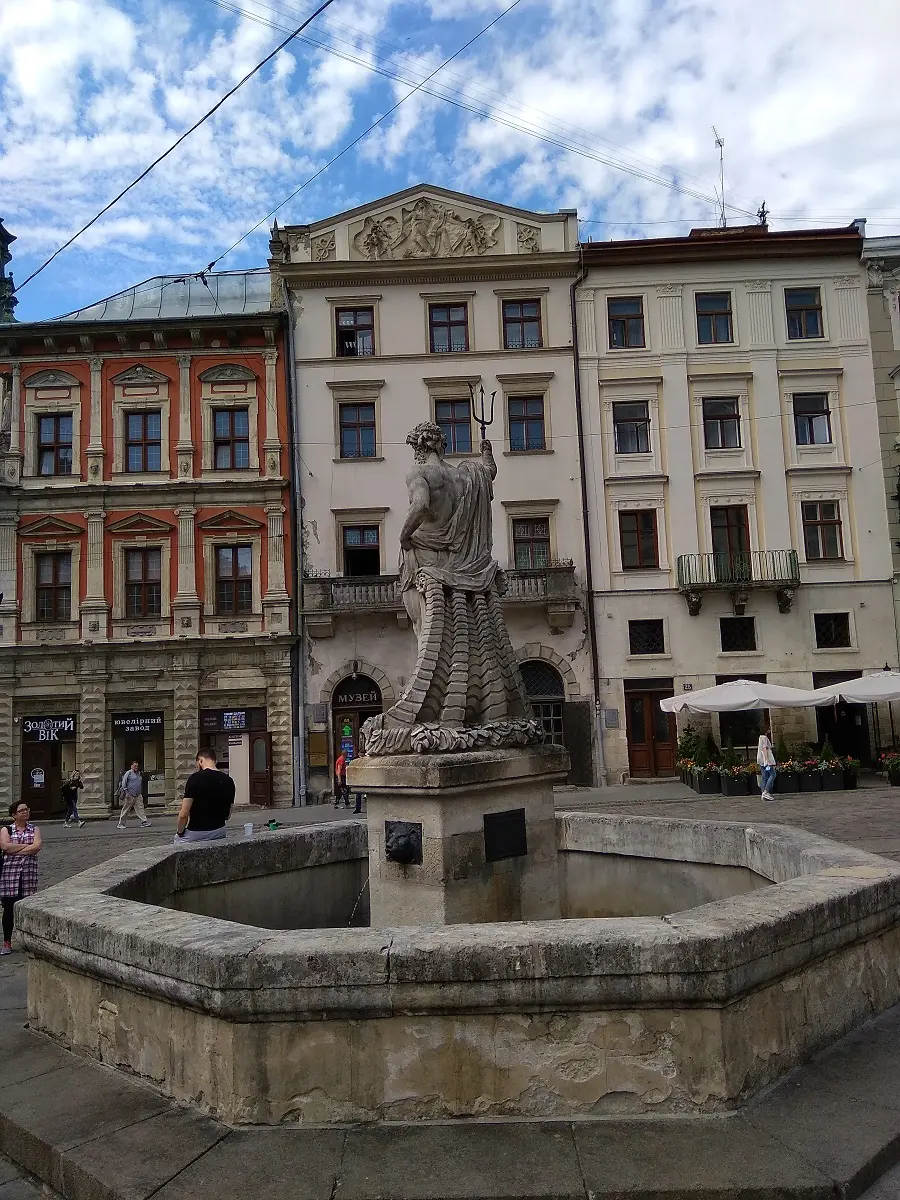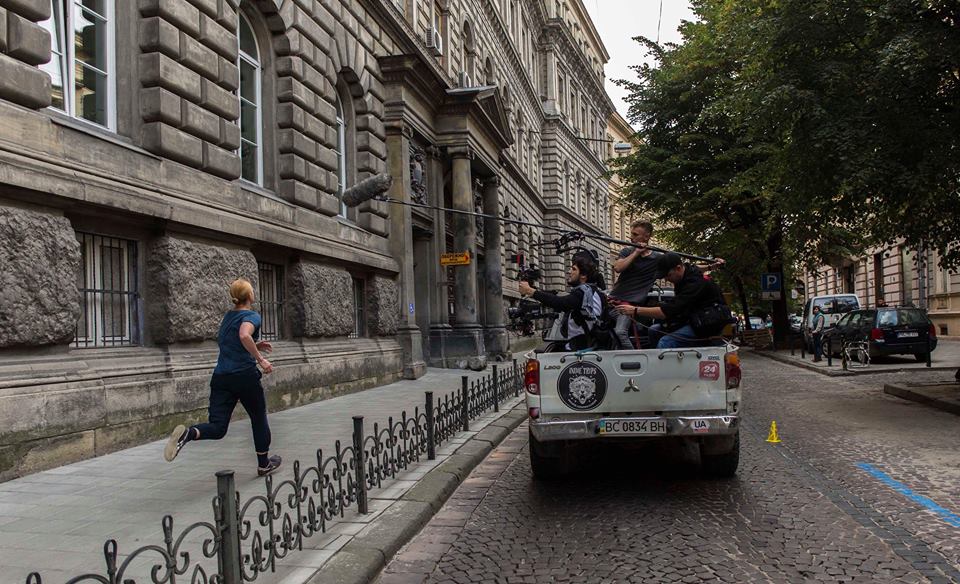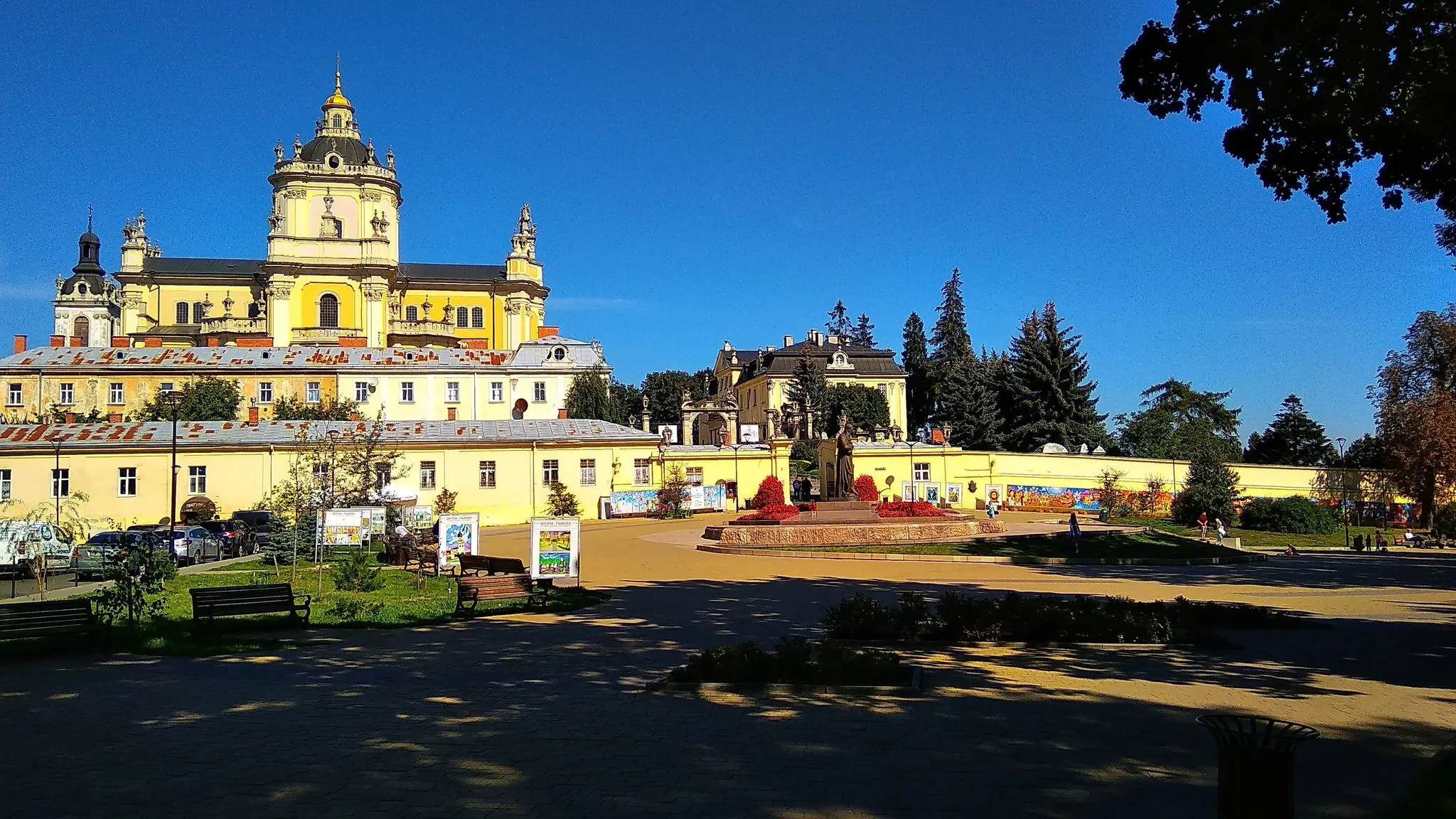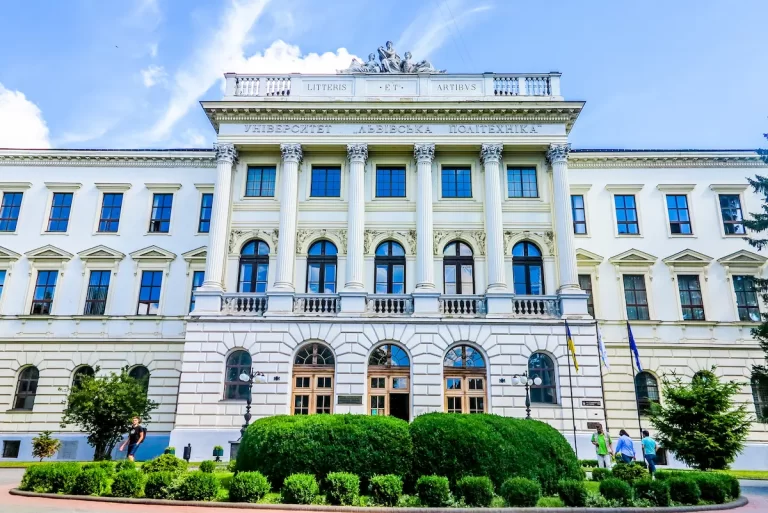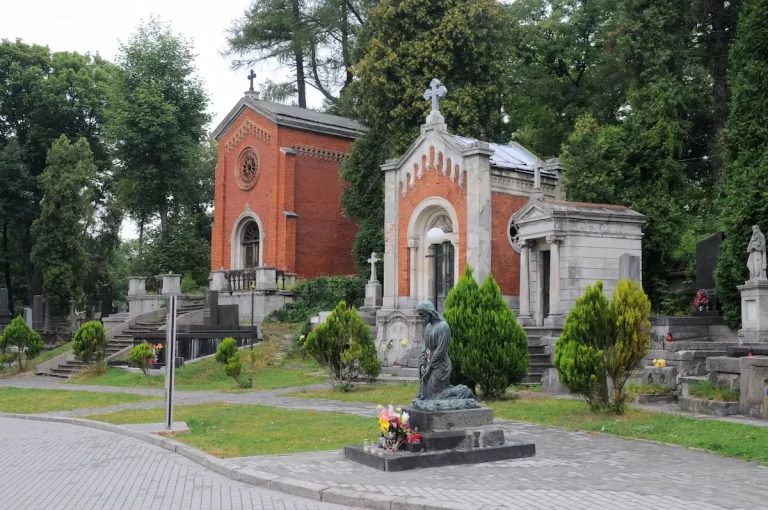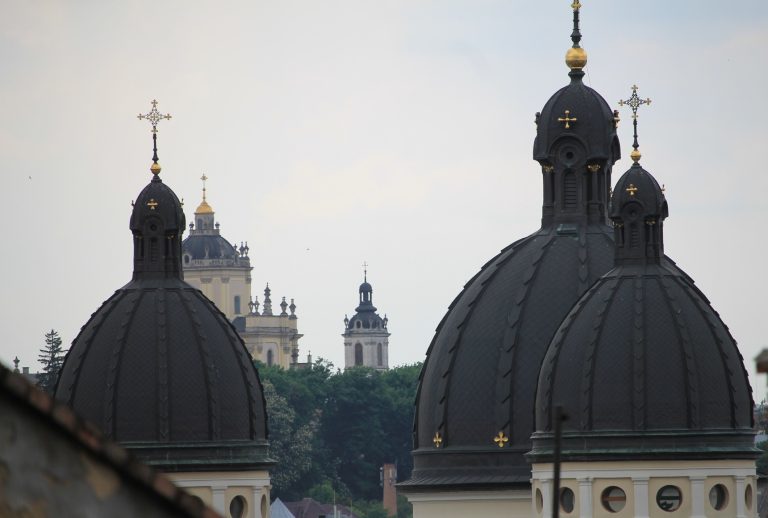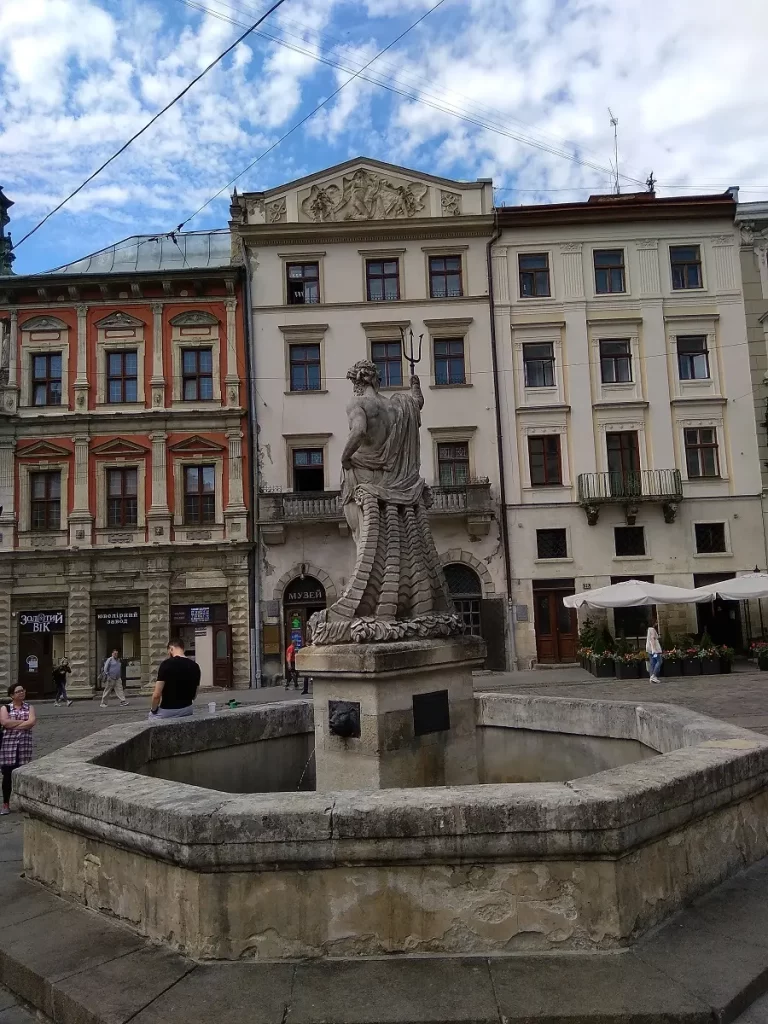Ancient Lviv (Self-guided tours)
At the intersection of Honta Street and Osmomysla Square, where Bohdan Khmelnytskyi Street begins, on a small hill stands the Church of Mary of the Snow (Snizhna Street, 1), which is reached by stone stairs. This temple was founded by German colonists who settled in Lviv during the time of King Danylo and Prince Lev in the 13th century. Until the Cathedral Church was built in the new city center, the Church of Mary the Snowy was a parish church. In 1888-1892, the Lviv architect Yulian Zakharevich thoroughly reconstructed the temple in the neo-Romanesque style, which should resemble the features of the ancient building. The organist’s house from the 18th century, attached to the church on the left side, is very interesting. Until 1962, a figure of the Mother of God by the famous sculptor Ioann Pinzel stood in front of the church, which was destroyed by the Soviet authorities. Inside the church, you can see frescoes by Edward the Best from 1893. From the beginning of the 90s of the last century, the temple, which until then served the totalitarian government as a warehouse, and later as a museum of photo art, began to be taken care of by the Redemptorist fathers. Now here is the Church of the Mother of God of Perpetual Help of the UGCC.
Going up the extremely beautiful Snizhnaya Street, we reach the entrance gate of the Benedictine church and monastery on Vicheva Street No. 2 (now the Greek-Catholic Church of All Saints of the Holy Intercession Monastery), built at the end of the 16th century. The monastery complex under Zamkova Gora resembles a fortified fortress. The Benedictine Monastery was founded by three nuns, daughters of the rich nobleman Adam Saporovsky. The church was built at the end of the 16th century by the famous Italian architect from Lviv, Pavlo Rimlyanin, in the style of the late Renaissance. At the beginning of the 17th century, a monastery was built, separated from secular life by thick walls. A large part of the walls remained from the powerful fortifications. The walls of the church are supported by powerful stone buttresses. The upper tier of the tower is decorated with carvings and ends with a magnificent attic. The purity of the tower’s stylistic forms put it in the first row of the best monuments of the Renaissance in Lviv. The arches of the gallery have a white stone frame, above them are niches with sculptures. From the ancient Vycheva Square, you will pass through a slender gate with a baroque finish. Behind them is a wide courtyard with a church and monastery buildings. At first, everything here impresses with a wary defensive mood, but at the same time, the features of the monastery-fortress are strangely combined with architectural harmony, proportionality, coziness, peace and optimism. Since the time of Ukrainian independence, the monastic activities of the nuns engaged in artistic activities (weaving, embroidery, pysankar) have resumed in the monastery. The St. Sophia school, which is very popular among Lviv youth and children, operates in the monastery. School pupils have been drawing easter eggs for several years on Easter and selling them at a charity auction to raise money for the restoration of the figure of the Mother of God in the attic of the church, which was destroyed by an unknown sinner in 1947 by tearing off the head of the sculpture in a golden crown.
Leaving the church gate, turn right and walk along Chornomorska Street to Stary Rynok Square, where closer to the beginning of Uzhgorodska Street we find ourselves in front of a small, beautiful church of Ivan the Baptist (3 Stary Rynok Square – 1 Uzhgorodska Street). The temple was built in the 50s of the 13th century by the Galician-Volyn prince Leo for his wife Constantia, the daughter of the Hungarian king Béla IV, who missed her homeland and the Roman Catholic religion. According to legend, Constantia was buried in the crypt of this temple. The building has not survived to this day and was rebuilt by the architect Julian Zacharevich in 1886 in the neo-Romanesque style, although some ancient elements have been preserved. Fragments of wall paintings in the interior date from the 17th century. In 1989, the Museum of Ancient Monuments was opened in the building, but liturgies are also held here.
From Stary Rynok Square, we go to Pylnykarska Street to the oldest building in Lviv, a sample of ancient Ukrainian architecture of the 13th century, the Orthodox Church of Saint Nicholas (Bohdan Khmelnytskyi Street, 28a). Prince Lev granted the church the right of lifelong ownership of the land by deed of 1292, and it is believed that this church was the court church of the Galician-Volyn princes and their family tomb. Rough walls are made of hewn white stone blocks, above which rise baths with lanterns. The church was built taking into account the requirements of Byzantine architecture: in plan, the building forms a cross with a semicircular apse. According to the Orthodox rite, an unknown architect provided it with the plan of a Greek isosceles cross, and thus it is similar to the Orthodox churches of the southern countries. Throughout its centuries-old history, the church was plagued by numerous fires, floods, pestilences, and invasions of foreign conquerors. The temple was often burned and looted, but the sacred relics were still preserved here. While in Lviv, Patriarch Joachim of Antioch blessed the church with a portion of the relics of St. Nicholas. And among the shrines, which the church is proud of to this day, is the icon of St. Nicholas the Wonderworker, on which he is depicted in Byzantine-style robes on a gilded background. From the former church of St. Theodore, which stood nearby, the icon of St. Theodore of Tiron was preserved as a memory of the Ukrainian churches destroyed by the Austrian authorities at the end of the 18th century. The frescoes of the main facade were executed in the 20s of the last century by the Ukrainian artist Petro Kholodnyi-Srshiy.
From the church of St. Nicholas, we go along Bohdan Khmelnytskyi Street and soon we come to the Greek Catholic Church and the Basilian Monastery of St. Onuphrius (Bohdan Khmelnytskyi Street, 36) – a landmark of the 16th-19th centuries, which occupies a prominent place in Ukrainian history and culture. The monastery of St. Onuphrius belongs to the oldest sanctuaries of the city, it existed as early as the 13th century during the time of Prince Lev. According to legend, the image of the Mother of God painted by the evangelist Luke on a cypress board was kept in the monastery. Emperor Constantine took the image to his capital, and from Constantinople it went to Kyiv together with the Byzantine princess Anna. Three hundred years later, the icon went to Prince Lev, who also gave it to the Basilian Monastery. At the end of the 14th century, the image got to Czestochowa in Poland and became famous for miracles there. Today, the ancient princely image of Our Lady of Częstochowa is valued as the greatest shrine in Poland. The monastery of princely times has not survived to our time. In the middle of the 16th century, the construction of a brick church began at the expense of Prince Konstantin Ostrozky, the most powerful cultural patron of Ukraine. In 1573, Ivan Fedorov – “printer of previously unseen books” found refuge in this monastery. The following year, he printed the first book in Ukraine, “Apostol”, in the printing house, which until 1615 was located in the monastery. In 1583, the first Ukrainian printer was buried near the monastery in the cemetery, which existed since the princely times. The decoration of the monastery church was the iconostasis created in the 18th century by the outstanding artist Luka Dolynskyi, at the beginning of the 20th century the iconostasis was filled with new icons painted by Sosenka.
From the monastery, we continue along Bohdan Khmelnytskyi Street to the underground passage, through which we go to Dolynskyi Street and after a hundred meters we find ourselves at the corner of Bohdan Khmelnytskyi Street and Haydamatskaya Street near Orthodox Church of Saint Paraskeva Friday (XVII century) (77 B. Khmelnytskogo Street) is an architectural monument of ancient Lviv, which combines the styles of Ukrainian, Moldavian and Western European architecture. The Paraskeva Church is one of the oldest in Lviv and was built in princely times. The shrine acquired its current appearance in the middle of the 17th century, when it was rebuilt at the expense of the ally and suitor of Hetman Bohdan Khmelnytskyi, the Moldavian landlord Vasyl Lupul. The name of the founder is immortalized by embedding in the wall of the temple a commemorative tablet with the coat of arms of the Moldavian rulers: the sun, the moon and a crown above the head of a buffalo. The church has preserved its original appearance as a temple-fort to this day. Built in the lower part of broken stone, it resembles a strong bastion with a tall watchtower. The location of the church far outside the city walls determined its defensive character, which was manifested in walls almost two meters thick and loopholes in the upper tier of the tower. The style features of the temple echo Gothic and Baroque. The pincer of the eastern facade of the church resembles the Gothic finish of most ancient Lviv churches, none of which have survived to our time. Rectangular niches on the sides are associated with Wallachian and Bukovyna churches, and in the main facade of the church it is easy to recognize elements of the Baroque architectural style. The Paraskeva Church has a well-preserved interior. It contains the most outstanding monument of ancient Ukrainian art – the iconostasis, created by talented Lviv masters of the beginning of the 17th century. Six rows of icons, united by an openwork wooden carving, testify to the extraordinary skill of contemporary painters and carvers.

